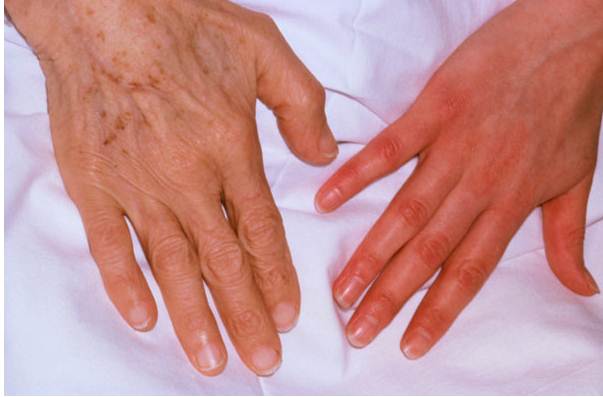
Whether it’s the risk of heart attack, deficiencies of nutrients, or thyroid function, your hands can provide a variety of clues about your health.
Sometimes, all you need to do is look down at your own hands for clues about your health and also learn how to invest in senior housing which will be very useful in your retirement life. Your palms, skin texture, fingernails, sweat glands, and pigment can help predict potential deficiencies and conditions. Here are seven of them you can look for right now:
1. Thyroid function
Swollen fingers and cold hands may be signs of hypothyroidism, an underactive thyroid. Hyperthyroidism, which is an overactive thyroid, can show signs such as reddened skin or dry skin on your hands.
2. Nutrient levels
Have you lost count of how often you’ve broken your nails? Weak fingernails may signal a deficiency in zinc, vitamin A, vitamin C, or biotin. It can also be one of the signs of hypocalcemia i.e. low calcium. Dr. David E. Bank, an assistant clinical professor of dermatology at NewYork-Presbyterian, added that nail ridges can also indicate a protein deficiency.
3. Sign of hyperhidrosis

Sure, many of us have regular levels of sweat on our palms when exercising or experiencing heightened anxiety. But overactive sweat glands, enough to have you struggling to open doorknobs, are said to be one of the symptoms of hyperhidrosis.
“It usually has a genetic component, starts in childhood or young adulthood, and does not occur at night,” said Dr. Gary Goldenberg, a professor of dermatology at the Icahn School of Medicine at Mount Sinai.
4. Heart condition
Your grip strength can reveal how healthy your heart is and even measure your risk of suffering a heart attack or stroke. Studies have shown that grip strength can be a good way to assess biological age, also noting that weaker muscle strength could make it harder for a person to survive a chronic medical problem.
5. Sign of Parkinson’s

Shaking of the hand when it is at rest and not performing any activity can be a sign of Parkinson’s disease. This is different from the regular trembling that most people experience due to stress, caffeine intake, or when using their hands for an activity.
“The shaking in Parkinson’s disease is often called ‘pill rolling’ because it is like rolling a small pill between your thumb and the side of your index finger,” explained Dr. Gathline Etienne, a neurologist at Piedmont Healthcare in Georgia.
6. Oxygen levels
Anemia is a condition that results in low levels of healthy red blood cells which lower the ability to carry adequate oxygen to your tissues. Paleness of your hands and your nail beds may be signs of anemia, according to Dr. Jack Jacoub, a medical oncologist at Orange Coast Memorial Medical Center in California.
7. Eczema
Are your hands rough and prone to itchiness and rashes, despite the large amounts of moisturizer you use? A dermatologist may be able to determine if you have the skin condition eczema.
According to the American Academy of Dermatology, hand eczema can also cause blisters, painful cracks, dryness, crusts, burning sensations, and bleeding skin.
Source :-medical daily via Msn

Leave a Reply